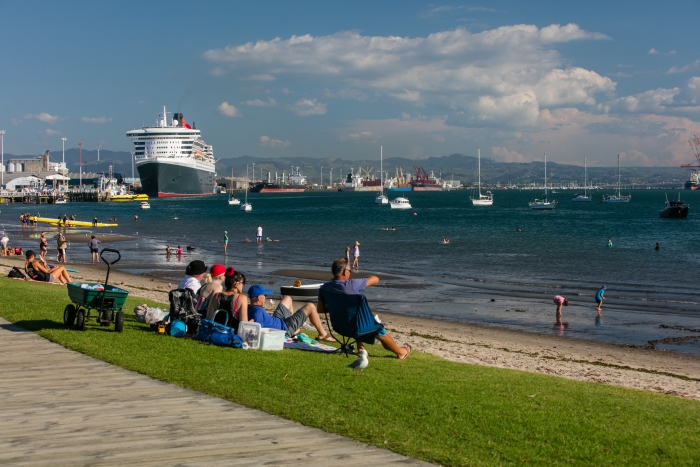Port of Tauranga has an important role in caring for the environment in which we operate. Our community looks to us for responsible stewardship and to maintain the integrity and diversity of our environment. Port of Tauranga sets, monitors and continuously improves operational standards to ensure our actions are environmentally sustainable. We report on our performance in our annual reports.
Our environmental policy and procedures incorporate issues such as biosecurity, noise, air quality, stormwater management, spill prevention, energy consumption, waste, fumigation of imports and exports, asbestos and other risks.
Energy efficiency and carbon emissions
Port of Tauranga is accredited under the Certified Emissions Measurement and Reduction Scheme (CEMARS). Our cargo emission sources are mainly diesel and electricity use, rail freight and waste to landfill. We have developed a carbon reduction plan and have set an initial short-term target of a 5% reduction in emissions per cargo tonne. We are targeting net zero emissions by 2050.
As we replace and purchase new equipment, energy-efficient options are prioritised. We have recently purchased three hybrid straddle carriers for our container terminal and are replacing other vehicles with electric or hybrid models where available.
Air and stormwater quality
In recent years, Port of Tauranga has improved housekeeping to prevent dust and debris entering the harbour. A third sweeper truck has recently been introduced to the log wharves and contractors are also required to continuously clean their work sites. Additional screening chambers have been installed on stormwater drains at the Mount Maunganui wharves and at Tauranga’s container terminal, isolation valves have been automated to allow faster safety responses in the case of an accidental fuel or chemical spill.
Fumigation
Many imported and exported cargoes are fumigated kill any bugs trying to enter or leave New Zealand. A common fumigant is methyl bromide, an odourless gas that is toxic to humans and damaging to the environment. The biggest users of methyl bromide in New Zealand are log exporters, whose major markets demand its use.
At Port of Tauranga, fumigation is carried out by highly experienced operators Genera, according to the codes of practice outlined by the Environmental Protection Agency and the Bay of Plenty Regional Council, as well as our own protocols. They require Genera to recapture methyl bromide used in fumigation and adhere to rules regarding exclusion zones and notifications.
Forestry exporters are working to reduce the amount of methyl bromide required, including removing bark (and pests) from export logs. Port of Tauranga incentivises de-barking of logs prior to their arrival at the port.
Biosecurity
Port of Tauranga is part of an award-winning biosecurity excellence partnership with the Ministry for Primary Industries, Kiwifruit Vine Health, primary produce organisations, scientists and local government. It aims to build a port community prepared to prevent any pest incursions through the port. The partnership runs an annual Biosecurity Week to raise awareness among the port community.
Building effective rail, road and coastal shipping networks
Port of Tauranga works with the city and regional councils and government agencies to protect and enhance the roading and rail networks connected to the port. We favour rail transport over road because of the lower carbon emissions and avoidance of road congestion. Approximately 42% of imports and 48% of exports arrive or leave at Port of Tauranga via rail.
The availability of rail and coastal shipping to consolidate cargo at the port, and the efficiency of the bigger ships that call at Tauranga, means Port of Tauranga is the obvious choice for customers seeking the lowest carbon supply chain. Big ships of 7,500 to 9,500 TEUs, which can only call at Tauranga, have a carbon footprint almost a third lower than the previous average size vessels calling in New Zealand.
Environmental policy
The Port’s operations are guided by our Environmental Policy and – under the Resource Management Act 1991 – are governed by resource consents protecting the harbour and neighbouring environment.
These cover the Port’s activities such as dredging, spoil disposal, discharges and wharf construction. All consents have monitoring conditions to ensure the quality of our community’s environment is maintained.
